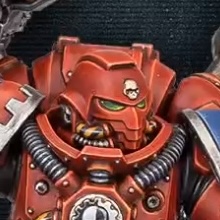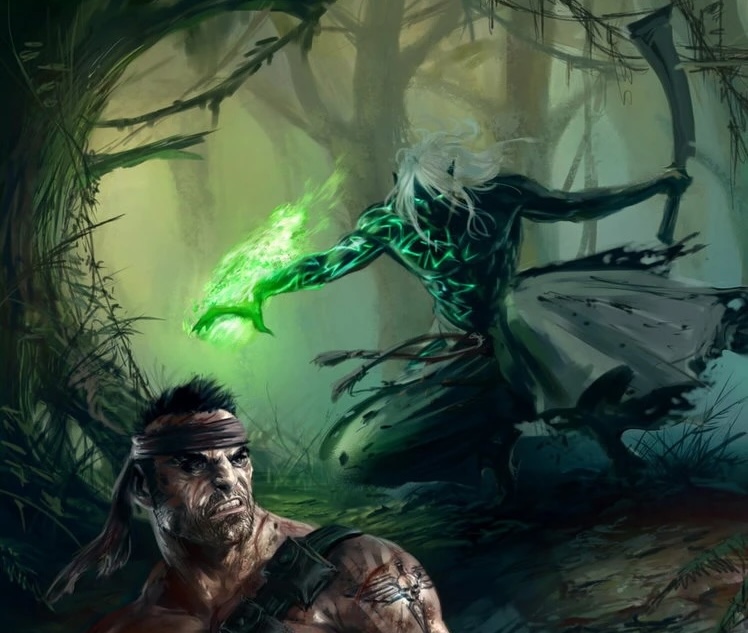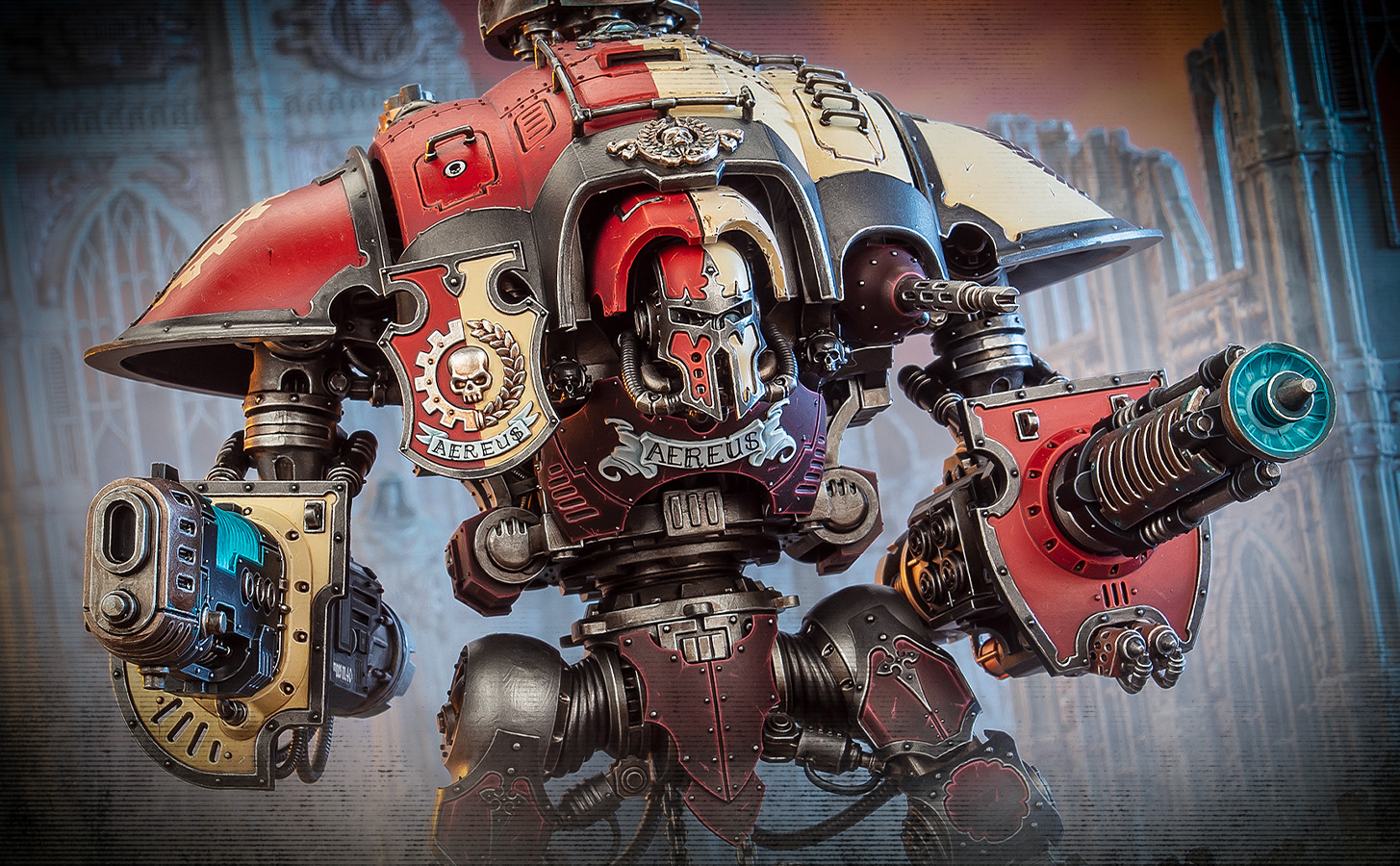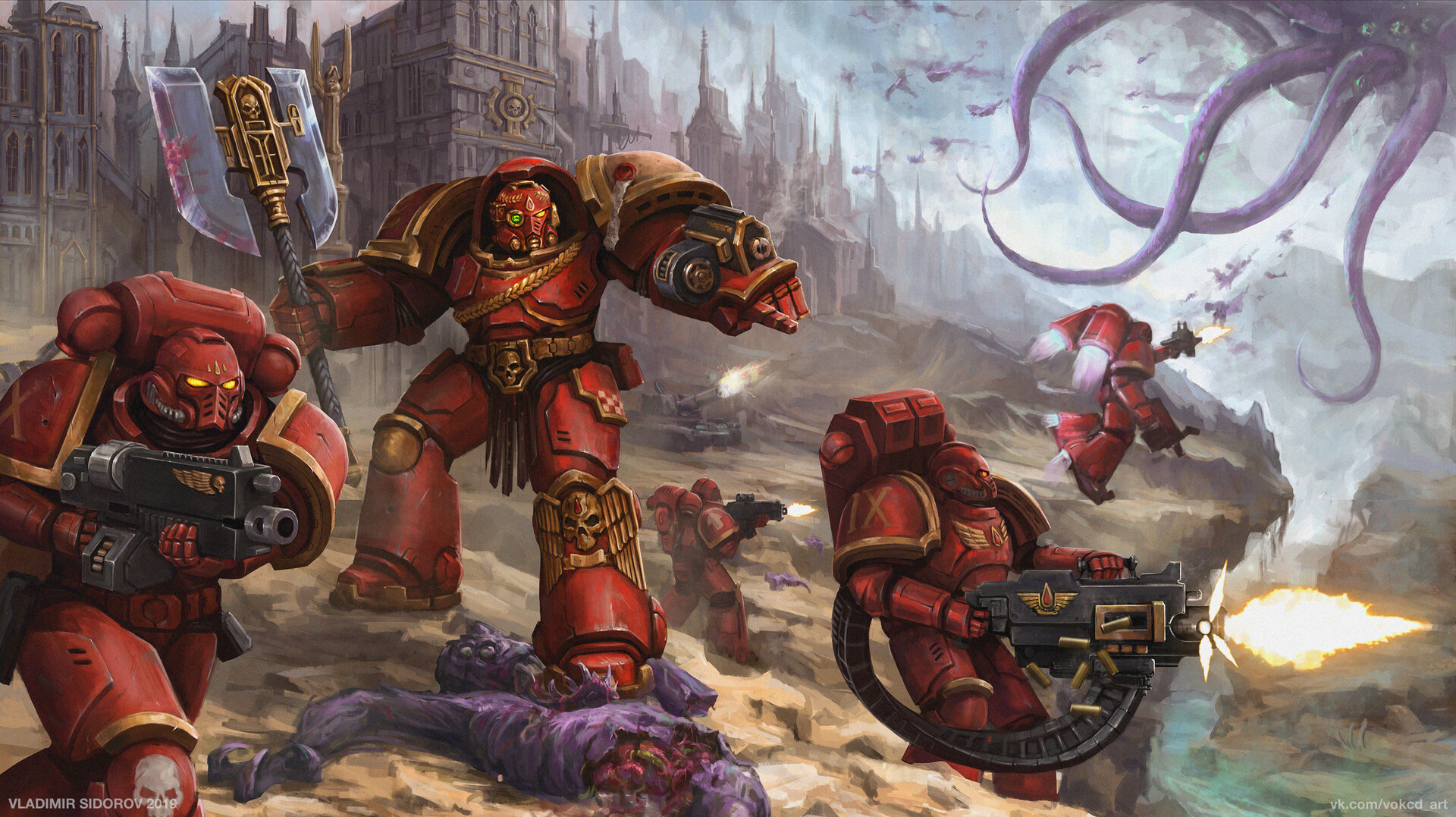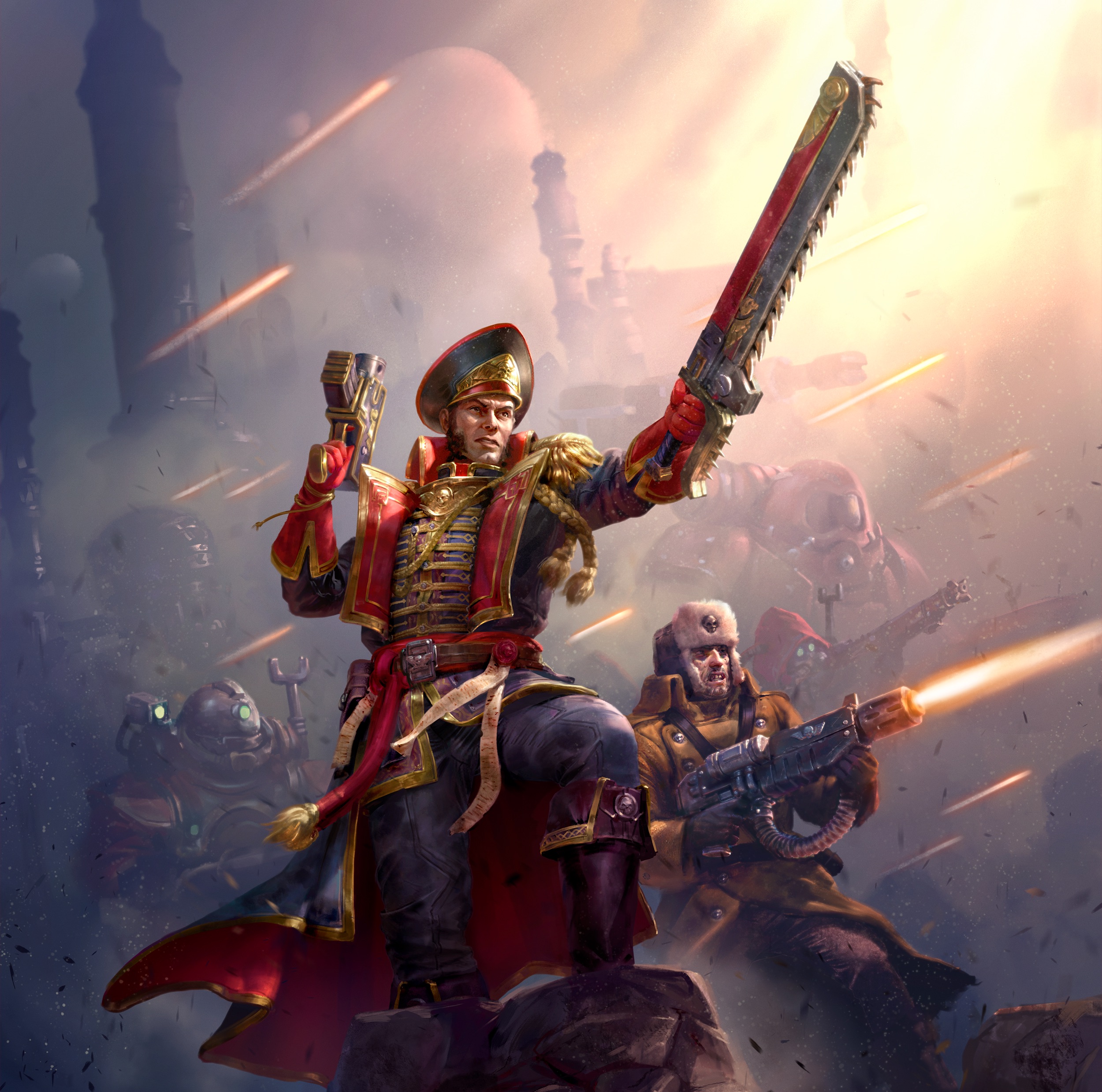Introduction and Overview
In the grim darkness of the far future, few board games have captured the claustrophobic terror and tactical intensity of space combat like Games Workshop’s Space Hulk. First released in 1989, this iconic two-player board game has become a cornerstone of the Warhammer 40,000 universe, spawning multiple editions, expansions, and adaptations over more than three decades. Its enduring popularity speaks to both its elegant game design and the compelling narrative it creates on the tabletop.
At its core, Space Hulk is set aboard the titular space hulks—massive derelict spacecraft that drift through the void, comprised of the twisted wreckage of numerous vessels fused together by the unpredictable forces of the Warp. These ancient, labyrinthine structures often contain valuable technology from humanity’s past, making them tempting targets for exploration despite the extreme dangers they pose. In the lore of Warhammer 40,000, these space hulks appear and disappear seemingly at random as they enter and exit the Warp, creating urgent opportunities for salvage operations that cannot be ignored by the Imperium of Man.
The game pits a small squad of elite Space Marine Terminators—superhuman warriors clad in tactical dreadnought armor—against a potentially limitless horde of Tyranid Genestealers, alien monstrosities that represent the vanguard of a galaxy-consuming hive fleet. This asymmetric confrontation takes place in the narrow corridors and chambers of a space hulk, where the heavily-armed but slow-moving Terminators must complete specific mission objectives while fending off the lightning-fast Genestealers that excel at close-quarters combat.
Space Hulk occupies a special place in Games Workshop’s catalog as one of their most successful specialist games outside the main Warhammer 40,000 tabletop wargame. While Warhammer 40,000 focuses on large-scale battles across open terrain, Space Hulk narrows the scope to tense, tactical engagements in confined spaces. This change in scale allows for a more focused gaming experience, with each decision carrying significant weight and consequences.
The game’s longevity is remarkable in the ever-changing landscape of tabletop gaming. From its original release in 1989 to its most recent fourth edition in 2014, Space Hulk has maintained its core identity while evolving in terms of production quality and rule refinements. Each new edition has been met with enthusiasm from both veteran players and newcomers to the hobby, often selling out quickly and becoming prized collector’s items.
What makes Space Hulk particularly notable is how it distills the sprawling, complex universe of Warhammer 40,000 into an accessible yet deep gaming experience. Even players unfamiliar with the broader lore can quickly grasp the desperate situation of a handful of elite warriors facing overwhelming alien hordes in the claustrophobic confines of an ancient spacecraft. This combination of straightforward premise and rich tactical depth has ensured Space Hulk’s place as not just a beloved Games Workshop product, but as a classic in the broader history of board gaming.
Original Release and Early Editions (1989-1991)
The story of Space Hulk begins in May 1989, when Games Workshop released the first edition of what would quickly become one of their most beloved specialist games. Designed by Richard Halliwell with development assistance from Dean Bass, the original Space Hulk captured the imagination of gamers with its tense, claustrophobic gameplay and distinctive aesthetic that drew inspiration from science fiction classics like the Alien film franchise.
The first edition came in a substantial box containing highly detailed board sections representing the corridors and chambers of a space hulk, plastic Genestealer miniatures, cardboard counters for the Space Marine Terminators, and various markers and templates needed for play. The modular board sections could be arranged in countless configurations, allowing for tremendous replayability and the creation of custom scenarios beyond those included in the rulebook.
What immediately set Space Hulk apart from other games of its era was its innovative asymmetric gameplay. The Space Marine player controlled a small squad of Terminators, each with specific weapons and abilities, while the Genestealer player commanded a potentially unlimited swarm of identical alien creatures. The Terminators excelled at ranged combat but moved slowly and deliberately, while the Genestealers were lightning-fast and lethal in close quarters but had no ranged attacks. This fundamental asymmetry created a natural tension that drove the game’s most memorable moments.
The game’s success was quickly recognized by the industry when it won the prestigious Origins Award for Best Fantasy or Science Fiction Boardgame of 1989. This accolade cemented Space Hulk’s status as not just another Games Workshop product, but as a significant contribution to tabletop gaming as a whole.
Following the success of the base game, Games Workshop expanded the Space Hulk experience with additional content published in their house magazine, White Dwarf. These articles introduced new scenarios, rules variants, and tactical options that kept the game fresh and engaging for dedicated players. The popularity of these expansions led to the release of two official expansion boxes in 1990.
The first expansion, Deathwing, was released in 1990 and introduced the Deathwing Company (First Company) of the Dark Angels Space Marines Chapter. This expansion significantly enhanced the options available to the Space Marine player by adding new character types including the Captain and the Librarian, as well as additional Terminator weapons that greatly expanded tactical possibilities. Perhaps most notably, Deathwing included rules for solo play, allowing the Space Marine player to enjoy the game without an opponent by using specific mechanics to automate the Genestealer forces. The expansion also included additional board sections, further increasing the variety of possible mission layouts.
The second expansion, also released in 1990, was simply titled Genestealer. This box set focused on enhancing the alien side of the conflict by introducing the Genestealer Cult, including Human-Genestealer Hybrids that could carry weapons and equipment, as well as the powerful Magus and Patriarch units. These additions brought much-needed depth to the Genestealer player’s options, which had previously been limited to the straightforward tactics of the pure Genestealers. The expansion also featured rules for an elaborate system of psychic combat and included additional board sections.
The early content from White Dwarf magazine, along with new material, was collected and published in 1991 as Space Hulk Campaigns, a hardback book that was later reprinted as a paperback in 1993. This compilation introduced rules for Imperial Space Marine Terminators fighting against Chaos Space Marine Terminators, adding a new dimension to the game. It also included rules for Space Marines in Power Armour (rather than Terminator Armour) and provided additional board sections to further expand the possible mission layouts.
The first edition of Space Hulk and its expansions established a solid foundation for what would become a long-running series. The combination of accessible rules, tense gameplay, and high-quality components set a standard that subsequent editions would strive to maintain and exceed. The early years of Space Hulk demonstrated Games Workshop’s commitment to supporting their specialist games with substantial expansions and ongoing content, a practice that helped build a dedicated community around the game.
Modern Editions and Expansions (1996-Present)
The second edition of Space Hulk arrived in April 1996, marking a significant evolution in the game’s presentation and mechanics. This new version featured substantially revamped board artwork and miniatures, offering a visual upgrade that reflected Games Workshop’s advancing production capabilities. The box contained two identical plastic five-man Terminator squads with standard weaponry (four carrying storm bolters and one equipped with a heavy flamer, with four bearing power gloves except for the sergeant who wielded a power sword), along with a complement of detailed Genestealer models.
While the second edition maintained the core asymmetric gameplay that had made the original so compelling, it significantly simplified the rules compared to the first edition. This streamlining made the game more accessible to newcomers but offered less opportunity for expansion due to the specific dice used for the game. A critical change was made to the Command Point system—in the original game, the Terminator player’s extra Command Points were hidden from the Genestealer player until used, creating an element of uncertainty. In the second edition, these points were visible to both players, slightly reducing the tension but improving gameplay clarity.
The second edition also adjusted the “blip” mechanic for Genestealer reinforcements, allowing for 0-6 creatures per blip rather than the 1-3 of the original game. This change increased the uncertainty for the Terminator player, as a single blip could now potentially contain no Genestealers at all or a devastating swarm of six. However, the second edition did not incorporate the expanded options from the Deathwing and Genestealer expansions, focusing instead on refining the core experience.
Following the second edition, Space Hulk entered a dormant period that lasted over a decade. During this time, the game remained popular among collectors and enthusiasts, with second-hand copies commanding increasingly high prices as supplies dwindled. This period of absence only served to enhance the game’s legendary status among Games Workshop fans, creating a sense of anticipation for a potential return.
The long wait ended in September 2009 with the release of the third edition, which arrived as a limited-run product to celebrate the game’s 20th anniversary. This edition was presented as a premium collector’s item, featuring highly detailed plastic miniatures that represented a significant upgrade from previous versions. The third edition included 11 mission scenarios, some new and some adapted from earlier editions, and reintroduced the Broodlord, a powerful Genestealer leader that had been absent from the second edition.
The third edition’s rules returned to some of the original game’s mechanics while maintaining the streamlined approach of the second edition. The limited availability of this release—Games Workshop explicitly stated it would not be reprinted—created a frenzy among collectors, with copies selling out almost immediately and quickly appearing on the secondary market at inflated prices. This limited release strategy, while frustrating for some fans who missed the opportunity to purchase at retail price, reinforced Space Hulk’s status as a premium collector’s item.
Five years later, in 2014, Games Workshop surprised fans with the announcement of a fourth edition. Like its predecessor, this was positioned as a limited release that would not be reprinted once sold out. The fourth edition maintained the high production values established by the third edition, with premium components and detailed miniatures. It included a similar selection of missions and components, with minor refinements to the rules and presentation.
The fourth edition continued the tradition of quick sell-outs and secondary market appreciation, further cementing Space Hulk’s reputation as both a beloved game and a valuable collector’s item. The limited availability of both the third and fourth editions created a distinct pattern in Space Hulk’s modern history—brief windows of availability followed by long periods where the game could only be acquired at premium prices from resellers.
Throughout this modern period, Space Hulk also expanded beyond the tabletop with several video game adaptations. Electronic Arts produced the first digital version in 1993, with a sequel released in 1995-1996. These early adaptations captured the claustrophobic tension of the board game while adding real-time elements that weren’t possible in the physical version. More recently, a new adaptation titled Space Hulk: Tactics was released in 2018 by Cyanide Studio, bringing the game to modern gaming platforms with updated graphics and gameplay.
The modern editions of Space Hulk represent a different approach to the game’s legacy compared to the expansion-heavy early years. Rather than broadening the game with new units and rules, the focus shifted to refining the core experience and elevating the production quality to create definitive versions of the classic game. This strategy has successfully maintained Space Hulk’s position as one of Games Workshop’s most prestigious specialist games, with each limited release becoming an event that generates excitement throughout the gaming community.
Gameplay Evolution and Cultural Impact
At the heart of Space Hulk’s enduring appeal lies its distinctive asymmetric gameplay, a design choice that was relatively uncommon when the game first appeared in 1989 but has since become more prevalent in modern board gaming. This fundamental asymmetry—pitting the slow but powerful Terminators against the fast and numerous Genestealers—creates a natural tension that drives the game’s most memorable moments and has remained consistent across all editions.
The game’s hidden play mechanics are perhaps its most innovative feature, generating suspense and uncertainty for both players. For the Terminator player, the unknown quantity of Genestealers represented by each “blip” token creates constant anxiety—a single blip might contain just one creature or a devastating swarm. Conversely, in the original edition, the Genestealer player never knew exactly how many Command Points the Terminator player had available for unexpected actions or overwatch fire. These hidden elements ensure that no two games play exactly the same, maintaining the tension even for experienced players.
One of Space Hulk’s most distinctive gameplay elements is the time constraint imposed on the Terminator player. With a limited time—typically just three minutes—to complete their turn, the pressure to make quick decisions adds a real-time element to an otherwise turn-based game. This time limit simulates the stress and urgency of combat in the claustrophobic corridors of a space hulk, where hesitation can mean death. The ticking clock also prevents analysis paralysis, keeping the game moving at a brisk pace and ensuring that matches can be completed in about 30 minutes, making it possible to play multiple games in a single session.
The evolution of Space Hulk’s rules across its four editions reflects Games Workshop’s approach to game design over the decades. The first edition and its expansions offered considerable depth and customization, with numerous options for both players. The second edition streamlined these rules, making the game more accessible but reducing some of the tactical complexity. The third and fourth editions found a middle ground, maintaining the streamlined core while reintroducing some of the depth that veterans appreciated. This evolution mirrors broader trends in board game design, which has increasingly emphasized accessibility without sacrificing strategic depth.
Beyond its mechanics, Space Hulk has had a significant impact on the broader Warhammer 40,000 universe. The game introduced or popularized several elements that have become staples of the setting. The Genestealer Cults, first detailed in the Genestealer expansion, have evolved into a major faction within the main Warhammer 40,000 game, complete with their own model range and codex. Similarly, Terminator armor, while not created for Space Hulk, gained prominence through the game and has become one of the most iconic images associated with Space Marines.
Space Hulk’s influence extends beyond Games Workshop’s products. Its tight, scenario-based gameplay focusing on small-scale tactical combat in confined spaces has inspired numerous other games, both within the science fiction genre and beyond. The concept of asymmetric forces with radically different playstyles has become more common in modern board games, with Space Hulk often cited as an early and successful implementation of this approach.
The game has also maintained a dedicated community of players and collectors over its three-decade history. Fan-created scenarios, custom board sections, and rule modifications abound online, extending the life of the game beyond its official releases. The limited availability of the third and fourth editions has created a robust secondary market, with complete copies often selling for several times their original retail price. This collector’s market has further enhanced Space Hulk’s mystique, transforming it from merely a game into a coveted artifact of tabletop gaming history.
The digital adaptations of Space Hulk have introduced the game to audiences who might never encounter the physical version. The early Electronic Arts adaptations in the 1990s captured the claustrophobic atmosphere of the board game while adding real-time elements that weren’t possible in the tabletop version. More recent adaptations like Space Hulk: Tactics (2018) have updated the formula for modern gaming platforms, introducing new generations to the tense corridor battles between Terminators and Genestealers.
In the broader context of board gaming history, Space Hulk occupies a unique position. Released at a time when the hobby was still relatively niche, it helped establish Games Workshop as a publisher willing to create specialized, high-quality games beyond their main Warhammer lines. Its success demonstrated the market for premium board games with detailed miniatures and immersive themes, presaging the board game renaissance that would begin in the late 1990s and continue to the present day.
Space Hulk’s cultural footprint extends even to players who have never experienced the game firsthand. The image of a Space Marine Terminator standing against a horde of Genestealers in a narrow corridor has become iconic within gaming culture, referenced and homaged in numerous other works. This lasting visual impact speaks to the strength of the game’s core concept and the evocative power of its setting.
Conclusion
After more than three decades since its initial release, Space Hulk stands as one of Games Workshop’s most enduring and beloved specialist games. Its longevity speaks not only to the quality of its design but also to how effectively it captures the essence of the Warhammer 40,000 universe in a compact, accessible format. The tense confrontations between Space Marine Terminators and Tyranid Genestealers continue to resonate with players, whether they’re veterans who have followed the game since 1989 or newcomers discovering it through more recent editions.
What makes Space Hulk’s continued relevance particularly remarkable is how little the core experience has changed over the years. While the production quality has improved dramatically—from the cardboard Terminator counters of the first edition to the highly detailed plastic miniatures of the third and fourth editions—the fundamental gameplay remains recognizable across all versions. This consistency demonstrates the strength of the original design, which created a framework robust enough to withstand the test of time while flexible enough to accommodate refinements.
The balance of simplicity and depth in Space Hulk’s design is perhaps its greatest achievement. The basic rules can be explained in minutes, making the game accessible to newcomers, yet the tactical decisions created by those rules offer enough complexity to engage experienced players through hundreds of games. This balance is difficult to achieve in game design, and Space Hulk’s success in this regard helps explain its lasting appeal.
In recent years, Space Hulk has transcended its status as merely a game to become a collector’s item and cultural touchstone. The limited releases of the third and fourth editions transformed each new printing into an event, with copies selling out almost immediately and quickly appreciating in value on the secondary market. This collector’s status has added another dimension to Space Hulk’s legacy, making it not just a game to be played but an artifact to be preserved and displayed.
Looking to the future, the question of whether Games Workshop will release a fifth edition remains open. The pattern established with the third and fourth editions suggests that any future release would likely be another limited production run, maintaining Space Hulk’s position as a premium collector’s item rather than a regularly available product. Regardless of whether new official content appears, the game’s dedicated community ensures that Space Hulk will continue to be played and celebrated for years to come.
The story of Space Hulk is, in many ways, the story of specialist games in the tabletop hobby. From its origins as an innovative design that pushed the boundaries of what board games could be, through periods of evolution and dormancy, to its current status as both a beloved classic and a coveted collector’s item, Space Hulk has remained a touchstone for Games Workshop fans and board gamers alike. In the cramped corridors of derelict spacecraft, where superhuman warriors face alien horrors, players continue to find an experience that cannot be replicated elsewhere—a testament to the enduring power of Space Hulk’s vision.

